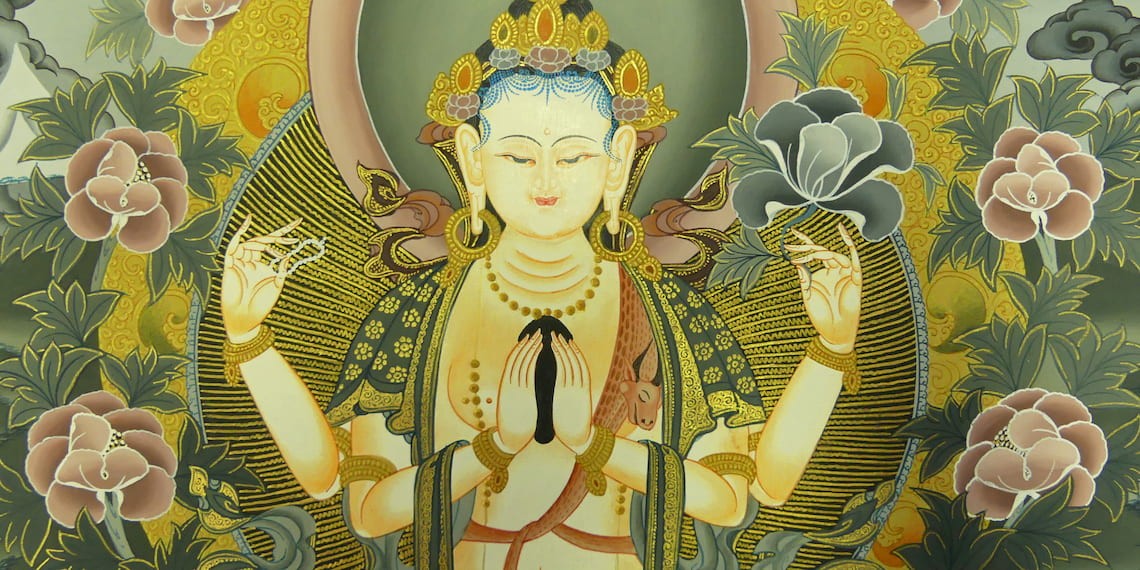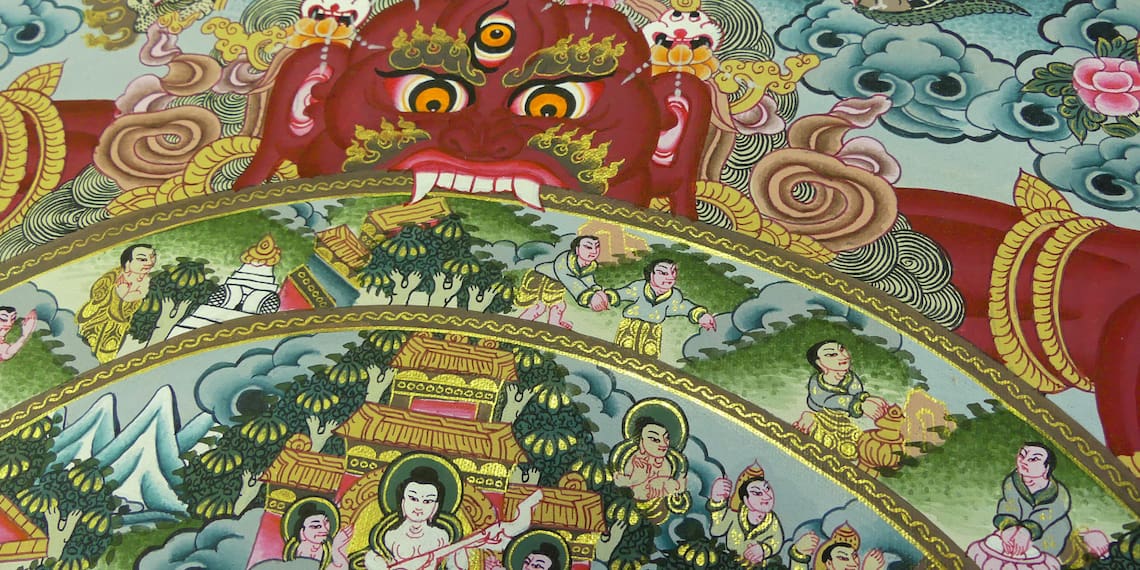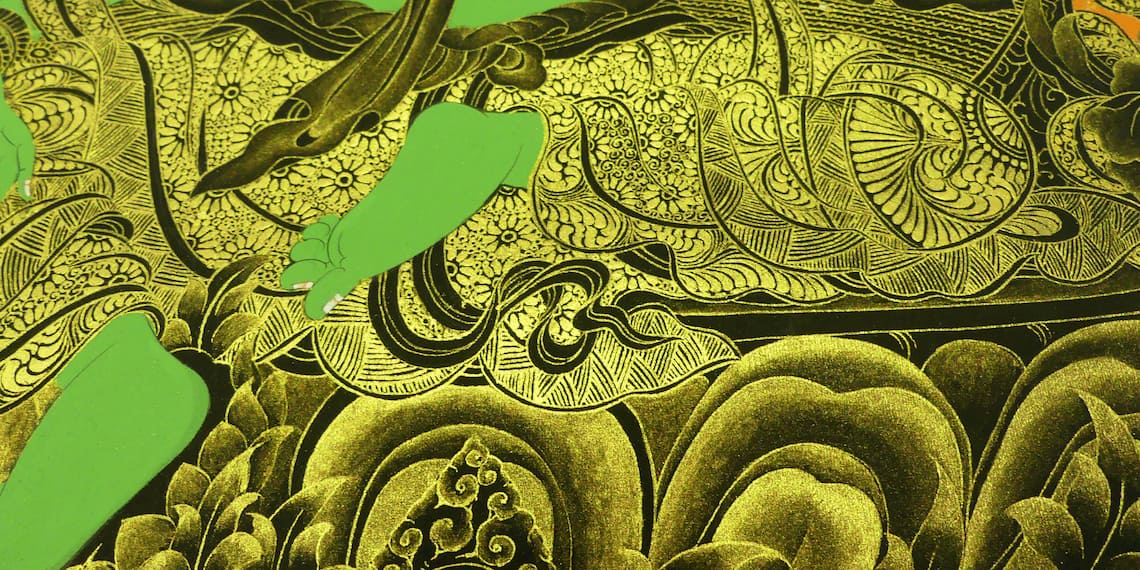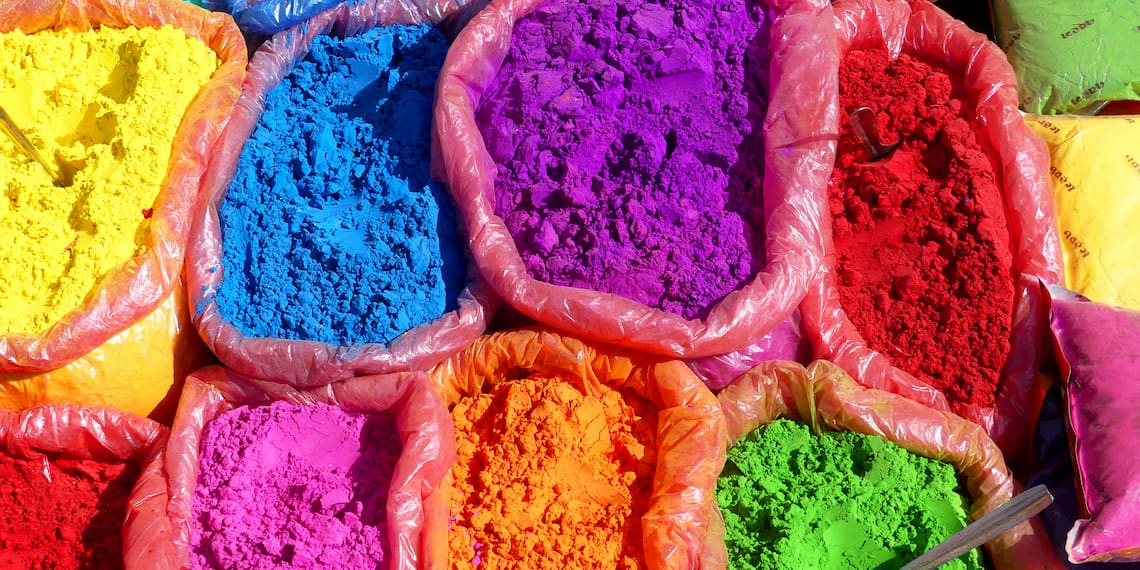
Thangka, mindfulness Tibetan painting
Arriving in Nepal, I discovered that painting has a strong presence including one art in particular which I know very little, these are the Thangkas. This pictorial art catches my attention by its colours, its superfine features and its harmony into its composition yet very simple.

Thangka, mindfulness painting
The Thangkas are a very codified art, we are absolutely not in a pure artistic expression as one’s could find in our contemporary painting, but rather a self-reflection approach of human nature and balance of the world. Indeed, to paint a Thangka you must be in a full consciousness approach. Rigour and patience of each detail dive the artist in a meditative concentration which allows him to achieve inner peace. Every single detail, each figurine is full of meaning and cannot be randomly arranged as each Thangka is telling a story related to Buddhism philosophy. Some of them talk about Buddha’s life, others of the wheel of life…
All these iconographies were used to transmit Buddhism through various regions of the Himalaya. In Nepal one’s consider the Thangka practice as a meditation tool on its own and the artist involved himself to make the viewer feel this well-being and harmony in each painting.
Thus, the mere fact of contemplating these art paintings should pacify your soul. That’s the artist’s intention.

The art of making a Thangka
Thangkas are painted on a cotton fabric specifically treated and primed. The fabric is covered with a diluted lime coating and vegetable gum which is then sanded. The paint comes from a long tradition, uses minerals and plants based colours, some of which are valuable like the lapis lazuli for the dark blue one. The minerals colours allow the Thangkas to maintain their wonderful fresh colours unchanged for centuries. When performing, the artist draws a pattern with a plant paper sheet and uses it as carbon or a layer, to transfer the stencil onto the fabric. Then the artist composes its colours by blending water with gum to the traditional vegetable and mineral powders and sometimes even gold dust.
Thangka’s performing is a type of work which requires long hours of painting, sometimes of many months or years for larger paintings.
The painters of Thangka must study iconography and develop the mixing technique of natural pigments for many years.

The symbolism of Thangkas
Each Thangka, in its composition, must respect Buddhist symbolic icons. Thus are often found main themes in it like Buddha’s life, the wheel of life, the divinities…
If you’d like to know more about the Thangkas’ different symbols, I invite you to click on the various links below:


